AMD AM1 Kabini Part 2: Athlon 5350/5150 and Sempron 3850/2650 Tested
by Ian Cutress on May 29, 2014 2:00 PM ESTSYSMark and Scientific Benchmarks
SYSmark 2014
SYSmark is developed by BAPCo, the Business Applications Performance Corporation, which includes in its current members Intel, Dell, Lenovo, Microsoft, Samsung, Sony, and Toshiba. The latest version of SYSmark, SYSmark 2014, uses the latest software packages from Adobe and Microsoft and meshes them together into a stringent testing package that can take a couple of hours to run. The end result gives marks for in office productivity, media creation and data/financial analysis sections as well as an overall result. SYSmark uses a standard office computer (an i3-4130 with a 500GB mechanical drive, 6GB DRAM, 1080p, integrated HD4400 graphics) to provide a benchmark score of ‘1000’, and all results are compared to this. Our testing runs the processors at 1080p with integrated graphics on an OCZ Vertex 3 240GB SF-2281 based SSD.
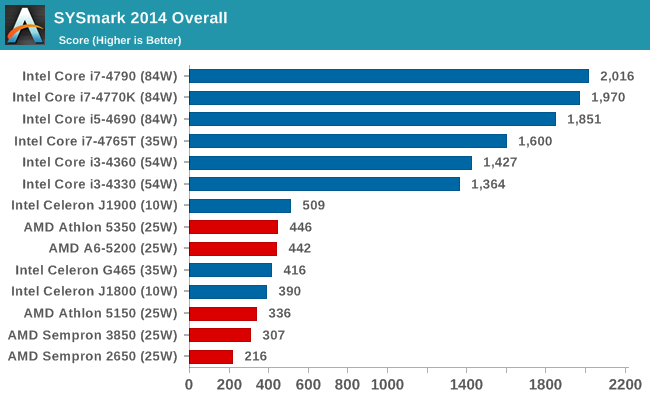
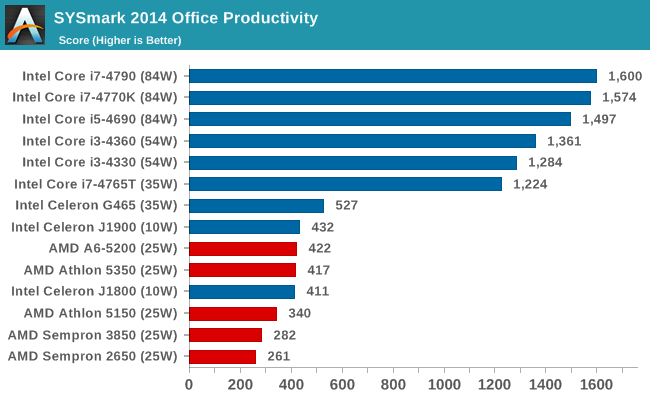
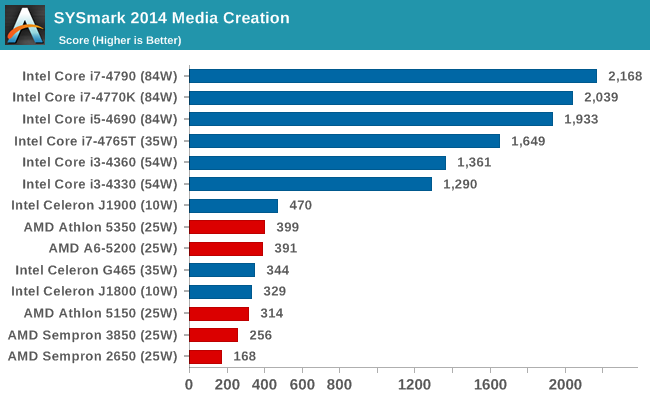
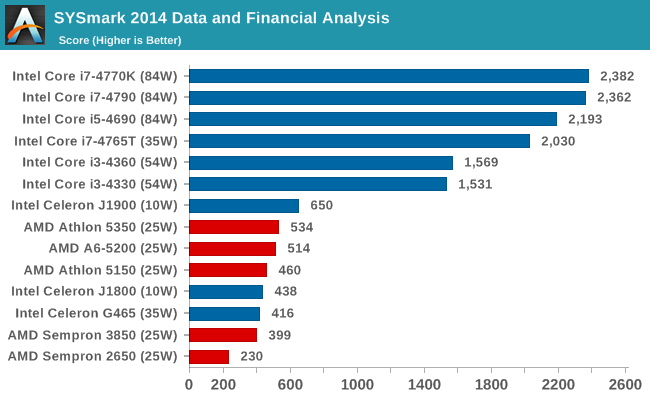
Point Calculations – 3D Movement Algorithm Test: link
3DPM is a self-penned benchmark, taking basic 3D movement algorithms used in Brownian Motion simulations and testing them for speed. High floating point performance, MHz and IPC wins in the single thread version, whereas the multithread version has to handle the threads and loves more cores.
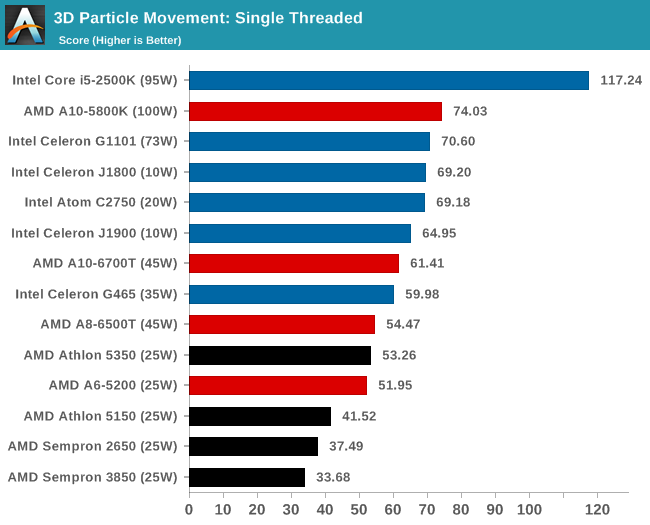
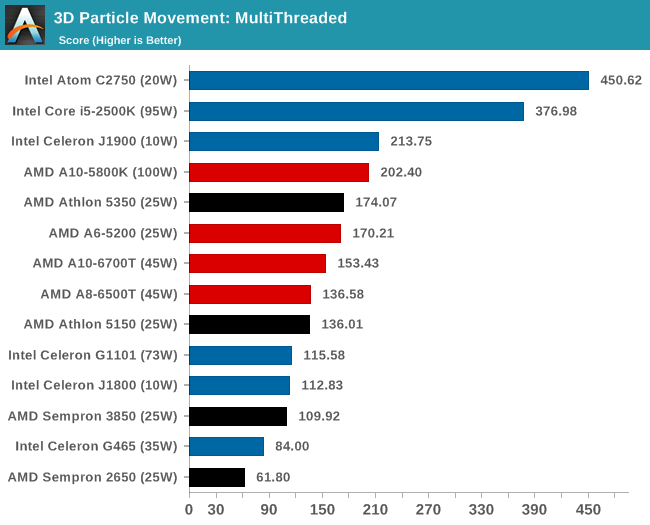
OpenCL – CompuBench: link
CompuBench is an OpenCL and RenderScript benchmark designed by Kishonti for both CPUs and any GPGPU capable device. While it offers almost two dozen tests, we select the more real-world tests in terms of fluid simulation and image analysis benchmarks.
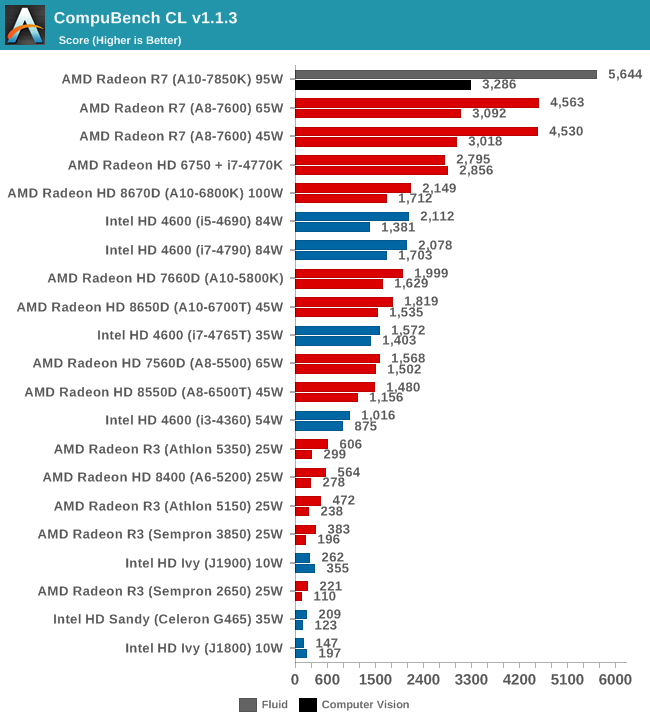










87 Comments
View All Comments
haardrr - Saturday, May 31, 2014 - link
but the i7-4675t is a 35 watt processor... does that mean that the i7-4675t competes with the 5350?Namisecond - Monday, June 9, 2014 - link
They are a lot closer in power usage than you might think, both idle and loaded.BMNify - Saturday, May 31, 2014 - link
why would you use a dual core anything to day ! , and these chips do not have AVX simd so are underpowered before you even start in 2014/15BMNify - Saturday, May 31, 2014 - link
also unless you are a large org looking to finally do mass signage in bulk then again these chips/soc are not worth it to day, if you want a few web enabled apps per Soc device then look to the http://cdn.liliputing.com/wp-content/uploads/2014/... for instance , now that will be worth the cash for something you want to actually buy on a whimhttp://liliputing.com/2014/05/crowdfunding-2-incre...
Crowdfunding: 3 incredibly tiny PC modules starting at just $15
silverblue - Saturday, May 31, 2014 - link
If you're including Kabini in that statement, the Jaguar architecture does indeed support AVX. In fact, it supports pretty much everything Piledriver does.BMNify - Saturday, May 31, 2014 - link
i wasn't, but again why settle for only old AVX , when you can have AVX2 AND a free hardware encoder and decoder that works for when you just want a quick conversion (or to make a new correctly time coded V/A fixed rate) http://forum.doom9.org/showthread.php?t=162442 Intel QuickSync Decoder - HW accelerated FFDShow decoder with video processing before you do the real x264 high visual quality encodeAlexey291 - Monday, June 2, 2014 - link
Why wouldn't you?The fewer the number of cores required to deliver equivalent performance the better.
Besides dual core cpu's are perfect for certain very real world applications - such as for example me typing out this message on a chromebook sporting a dual core haswell celeron.
eanazag - Tuesday, June 3, 2014 - link
Agree. I was looking for a cheap Haswell Pentium. Maybe you can compare in the bench.DanNeely - Thursday, May 29, 2014 - link
The graphs in this article leave a lot to be desired. The huge number of high power/performance chips only add clutter; at most 2 or 3 representative examples from each major vendor would suffice to show these processors are very low end performing. Alternately, use the color coding not to call out AMD vs Intel; but to highlight the 4 AMD chips being reviewed along the with the J1800/1900 celerons they're nominally competing with.Ian Cutress - Thursday, May 29, 2014 - link
I'll duplicate the graphs (after I eat dinner!) and limit the results data within a narrow band, and offer the option to switch between both.